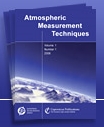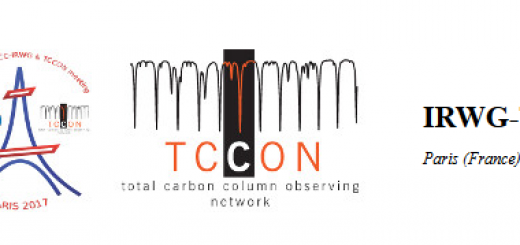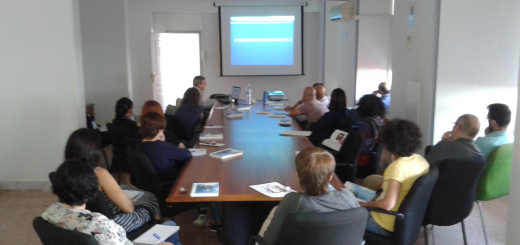New paper in the journal Atmospheric Measurement Techniques (AMT): Remote sensing of water vapour profiles in the framework of the Total Carbon Column Observing Network (TCCON)

In this paper the authors show that the near infrared solar absorption spectra recorded in the framework of the Total Carbon Column Observing Network (TCCON) can be used to derive the vertical distribution of tropospheric water vapour. Using spectral H2O signatures in the 4,500–4,700 cm−1 region one can well distinguish lower from middle/upper tropospheric water vapour concentrations. The vertical resolution is about 3 and 6 km, for the lower and middle/upper troposphere, respectively. They document the quality of the remotely-sensed profiles by comparisons with coincident in-situ Vaisala RS92 radiosonde measurements. The agreement of both techniques is very satisfactory. Due to the long-term strategy of the network and the high measurement frequency, the TCCON water vapour profile data offer novel opportunities for estimating the water vapour variability at different time scales and altitudes, especially in the middle and upper troposphere. But, why it is necessary to monitor water vapour accurately in these regions? The reason is that water vapour in the middle and upper troposphere accounts for a large part of the atmospheric greenhouse effect and is believed to be an important amplifier of climate change (i.e. the cirrus impact). However, due to instrumental limitations (i.e. classical radiosondes show a high uncertainty in humidity determination under very low humidity conditions), long-term changes in water vapour in the upper troposphere, characterized by very low humidity, are difficult to assess. So, the contribution of the near infrared solar absorption technique is very important to monitor de evolution of the water vapour in the upper troposphere. But, why it is necessary to monitor water vapour accurately in these regions? The reason is that water vapour in the middle and upper troposphere accounts for a large part of the atmospheric greenhouse effect and is believed to be an important amplifier of climate change (i.e. the cirrus impact). However, due to instrumental limitations (i.e. classical radiosondes show a high uncertainty in humidity determination under very low humidity conditions), long-term changes in water vapour in the upper troposphere, characterized by very low humidity, are difficult to assess. So, the contribution of the near infrared solar absorption technique is very important to monitor de evolution of the water vapour in the upper troposphere.
Schneider,M., E. Sepúlveda, O. García, F. Hase, and T. Blumenstock, Remote sensing of water vapour profiles in the framework of the Total Carbon Column Observing Network (TCCON), Atmos. Meas. Tech. Discuss., 3; 3,987-4,007, 2010, doi:10.5194/amtd-3-3987-2010. (Link to interactive discussion)
Related papers recently published by Schneider et al.:
Schneider, M., G. C. Toon, J.-F. Blavier, F. Hase, and T. Leblanc, H2O and δD profiles remotely-sensed from ground in different spectral infrared regions, Atmos. Meas. Tech. Discuss., 3; 3,105-3,132, 2010; doi:10.5194/amtd-3-3105-2010.
Schneider, M., K. Yoshimura, F. Hase, and T. Blumenstock, The ground-based FTIR network’s potential for investigating the atmospheric water cycle, Atmos. Chem. Phys., 10; 3,427-3,442, 2010, doi:10.5194/acp-10-3427-2010.







